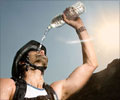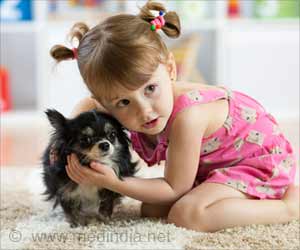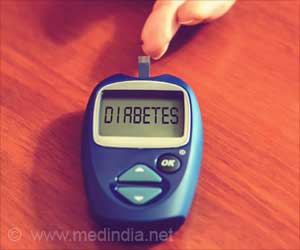The ultimate guide for your pets to beat the heat this summer.
- Ensure your dog has access to shade and regularly replenish their water to prevent dehydration
- Limit outdoor activity and be cautious with short-nosed breeds this summer
- Remember to watch for signs of heat stroke, never leave your dog in a parked car, and be mindful of the treats you offer, opting for dog-friendly frozen treats in moderation
Provide Lots of Shade and Fresh Water for your Dog
If you're going to be out in the sun, make sure your dog has plenty of shade. Remember to refresh his water frequently, as it can get heated quickly on a hot summer day, especially if it's in a metal bowl. When is it too hot? Unfortunately, there is no magic number that indicates whether it is hazardous for a dog to be outside.It all depends on your particular puppy. Age, health, breed, and even fur color are all factors to consider. Check on your sidekick periodically and provide an opportunity for them to go indoors and soak up some AC if they appear to be uncomfortable (1✔ ✔Trusted Source
Evaluation of Three Hydration Strategies in Detection Dogs Working in a Hot Environment
Go to source).
Before Taking your Dog for a Stroll, Inspect the Pavement
If the pavement is too hot for your bare feet, it is also too hot for your dog. We recommend scheduling your walks in the morning and evening to avoid peak sun hours when the ground can become dangerously hot and burn your pet's paw pads.Keep your dog on the grass whenever possible, and remember that if you're out for a summer stroll and he starts lifting his paws, hobbling, or skipping, it's time to go home.
Limit Outdoor Activity
Your dog may believe that playing fetch for hours in the heat is a good idea, but on hot summer days, try to limit their exercise time and intensity.High-energy canines and those who enjoy playing find it difficult to determine when they've had enough. They rely on you to make sound decisions for them.
Playing fetch with a soft toy inside or hiding and seeking goodies are terrific methods for your pooch to burn physical and mental energy in a chilly environment.
Be very Cautious if your Dog is Short-Nosed
Brachiocephalic breeds, sometimes known as short-nosed or snub-nosed breeds (such as Bulldogs, Pekingese, and Pugs), are more prone to respiratory problems in hot weather.Brachiocephalic breeds can't pant as well as other breeds because of their distinctive facial form, which means they can't cool down as well. As a result, they are more likely to suffer from heat stroke and other heat-related illnesses.
Keep an Eye out for Signs of Heat Stroke
Heat stroke happens when your dog's body is unable to expel excess heat. Symptoms include heavy panting, rapid heart rate, red gums, and excessive drooling, and are usually characterized by an internal body temperature of 106 degrees or greater. Your dog may also appear limp or drooping, as though they are really fatigued.If you fear your dog is suffering from heat stroke, bring them inside immediately and provide them with plenty of cool water. If feasible, wrap cool towels over their body or give your dog a cool bath.
Pro tip:
Leave out the ice cubes. Ice and ice water can cause stomach shock in your dog, making him even more uncomfortable.Heat stroke is a potentially fatal medical disease that can result in organ failure. Take your dog to the vet immediately away if he or she is unable to move or walk, has labored breathing, or does not appear to be as responsive as usual.
Never Leave your Dog in a Parked Car
Simply put, don't do that. On a cloudy day, no way. On a windy day, no way. Not even for "just five minutes."There is no safe period for a dog to be left in a hot car, and temperatures can rise incredibly quickly – even with your windows up. On a pleasant 70-degree day, the temperature inside a car can reach 104 degrees in just 30 minutes.
Aside from obvious health dangers, several towns and states have laws against keeping your pet in a car. So, if your plans include leaving your pet alone in the car, leave him at home instead.
Frozen Treats for your Pooches
When the summer heat strikes, there are few things more refreshing than a scoop of our favorite ice cream.And why should we people have all the ice cream to ourselves? It doesn't seem fair, does it? But, before you give your dog a scoop of the delicious stuff, consider the high sugar content and additives; our wonderful freezer treats aren't always suitable for a dog's diet.
Human ice creams might sometimes contain elements that you should never, ever give to your dog.
Don't let your dog overeat! Summer can be a season of indulgence for both humans and dogs, but like with any treat, moderation and plenty of exercise are essential for a happy, healthy pup.
Frozen treats, as well as ice and iced water, are acceptable for dogs to eat and enjoy as long as they are consumed in moderation. Bloating can occur when a dog consumes any form of food or drink too soon.
Ice or iced water is not known to be more harmful than other types of food; bloating is usually induced by eating a huge amount of food or eating extremely quickly.
Summer is best spent with your beloved friend, according to animal enthusiasts. Hence, keep yourself and your furry baby cool this summer, and for the animals that are outside, keep a bowl of water outside to do your part of kind.
Reference:
- Evaluation of Three Hydration Strategies in Detection Dogs Working in a Hot Environment - (https://pubmed.ncbi.nlm.nih.gov/29124059/)
Source-Medindia
















